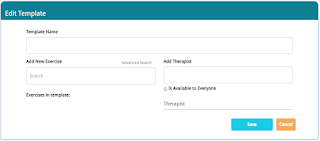We frequently hear stories from physical therapists and physical therapist assistants that their patients can’t seem to remember how to do their home exercises. The typical story goes like this:
Patient comes into the clinic.
PT/PTA, “Did you do your home exercises this past week?”
Patient, “Yes I did.”
PT/PTA, “Great. Let’s get you started with this exercise.”
Patient stands around looking a little lost.
PT/PTA, “Is there something wrong?”
Patient: “How do I do this exercise again?”
If you’ve experienced this exchange with your patients, you’re not alone. What were your thoughts after this exchange?
Perhaps you would think,
“Clearly he/she hasn’t been doing their exercises!”
One other thing therapists might think is,
“If I can do a better job of teaching him/her how to do this exercise, then they’ll remember how to do this exercise.”
However, as an ex-patient, I can honestly say that I was able to remember how to do all of my exercises as I left the clinic. I believe that the challenge is when the patient never or doesn't regularly do any of their exercises and then shows up at the clinic the following week. After days without doing their exercises, it is unlikely that the patient is going to remember how to do an exercise even if they had it memorized the previous week.
Since learning how to do an exercise is not the issue, then getting your patients to do their exercises is!
One of my good friends recently had back surgery 3 months ago. Even though she’s a nurse and fully understands the benefits of doing her home exercises, she confessed to me that she often doesn’t do it as she gets busy and can’t allocate the time to do all of her exercises. She said something always gets in the way.
I wonder if she’s ever had this discussion with her therapist. I know that she’s made significant progress since the surgery but after standing at a corner of a bike race for a few hours directing riders and traffic, she started to exhibit significant limping and was clearly in pain.
How can a therapist overcome the excuse of “no time”. Would breaking up her exercise program into multiple shorter sessions allow her the opportunity to complete at least some of her exercises instead of doing none? Maybe reducing the number of exercises in her program would be enough to overcome her no time excuse.
Each patient is different and may also have different behaviors depending upon how far away their injury or surgery occurred. Keep an open communication channel with your patient to stay on top of how well they are completing their home exercises.
… and if they tell you they’ve been doing their home exercises, they just might not be telling you the truth…
Start your Free 30-day Trial of the PT-Helper CONNECT tool for physical therapists and other therapy providers, so you may create and prescribe a Home Exercise Programs. Share the HEP program with your patients using the PT-Helper mobile app.
Photo by Jon Flobrant on Unsplash
















